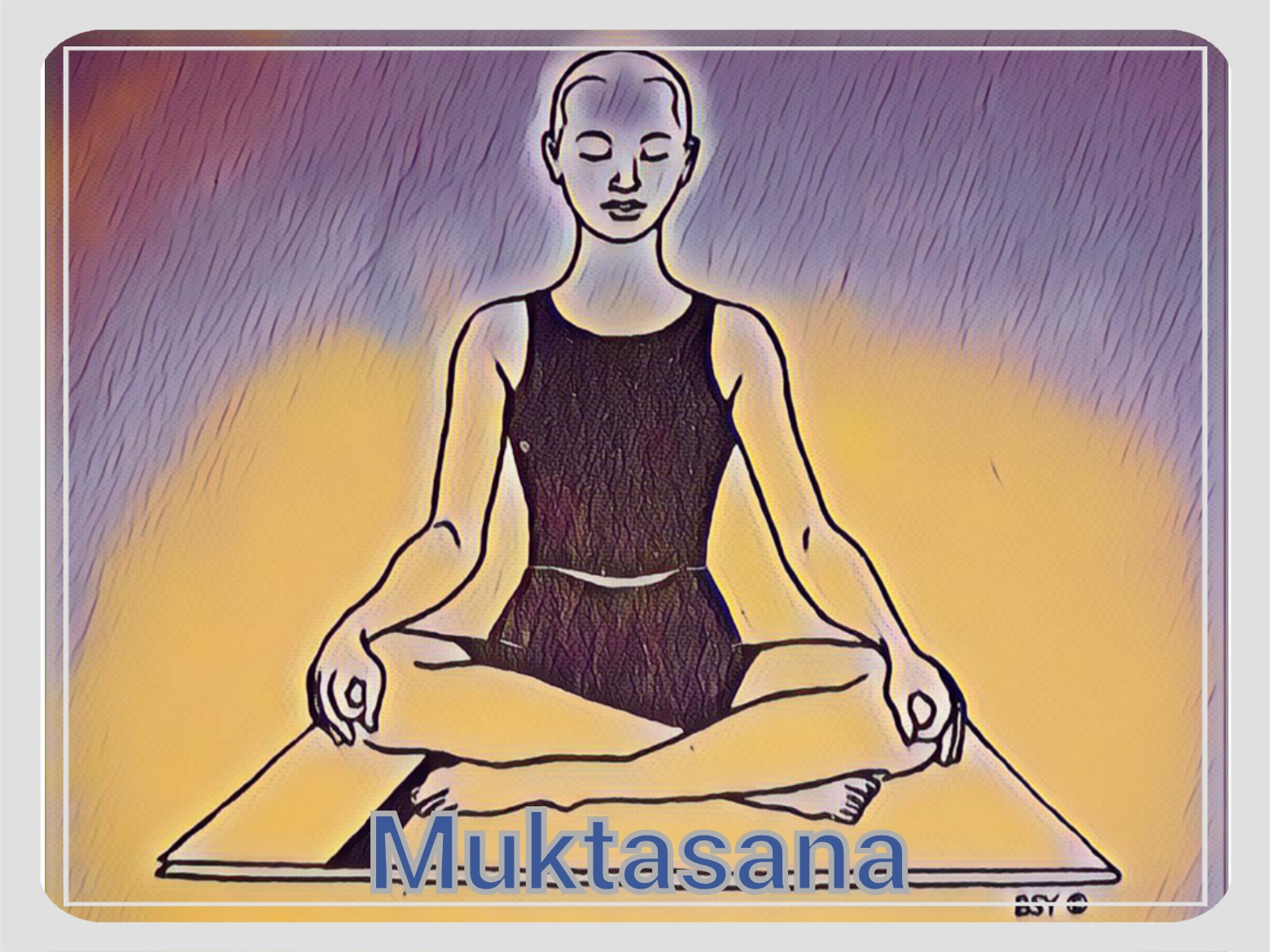Muktasana (Sukhasana)
In this article we will tell you what is Muktasana, the benefits of doing Muktasana, the right way to do it, method and precautions.
Muktasana, also known as “Freedom Pose”, is a yoga asana that involves sitting in a cross-legged position while keeping the spine straight. This asana is often done for meditation and pranayama (breath control).
The name “Muktasana” is derived from the Sanskrit words “mukta,” meaning free and “asana,” meaning posture. The practice of Muktasana promotes a feeling of inner peace and mental peace.

The practice of Muktasana is very simple. Everyone can sit in this seat. Its other name is Sukhasana. By sitting in this posture, the entire weight of the body falls on a very small contact area between the buttocks and the floor. Therefore, sitting in this posture for a long time may cause pain in this area. In such a situation, a pillow can be placed under the buttocks.
How to do it?
Muktasana is the simplest and most convenient asana for meditation. People who cannot sit in other difficult meditation asanas can use this asana. It provides physical and mental balance without causing any kind of stress or pain.
♦ In this, first of all we spread it in front of the feet.
♦ Bend the left leg and keep it under the right thigh and try to bring it as close to the body as possible.
♦ Then the right foot is placed over the left foot.
♦ One heel should remain above the other heel.
♦ The head and torso should remain in a straight line.
♦ Normally the hands are placed on the knees in the position of Gyanamudra or Chinamudra.
♦ Keep eyes closed.
♦ Leave the whole body loose.
Benefits of Muktasana (Sukhasana)
Improved Posture: Muktasana, or “Freedom Pose,” helps enhance overall posture by aligning the spine and promoting an upright and balanced sitting position.
Hip Flexibility: Regular practice of Muktasana increases flexibility in the hips, thereby relieving the tension and discomfort associated with tight hip muscles.
Strengthens back muscles: This asana activates and strengthens the lower back muscles, providing better support to the spine and reducing the risk of back pain.
Enhanced concentration: The meditative aspect of Muktasana encourages focus and concentration, promoting a calm and focused mind.
Relaxation and stress reduction: Muktasana promotes relaxation by calming the nervous system, making it beneficial for stress reduction and mental well-being.
Improves blood circulation: The sitting position in Muktasana facilitates healthy blood flow, especially in the pelvic area, which is beneficial for reproductive health.
Regulated breathing: A combination of postures and mindful breathing techniques can help regulate and deepen breathing, promoting respiratory health and oxygenating the body.
Balanced energy flow: Muktasana is believed to balance the flow of energy in the body, ensuring harmonious distribution of life force.
Preparing for meditation: This posture is often used as a starting posture for meditation.
Difference between sidhhasasana and Muktasana
Siddhasana and Muktasana are both yoga postures, but there is a difference in their posture and purpose. Siddhasana, involves sitting with the heels pressed to the perineum and is often used for meditation. Muktasana, on the other hand, involves sitting with legs crossed and spine straight. Hands are usually placed on the knees, and this is a posture commonly used for meditation and pranayama (breath control exercises).
Muktasana helps to calm the mind and promote a feeling of inner peace. It is considered a meditation posture that aids in spiritual growth and concentration.
Important
Muktasana (Sukhasana) is an easy way to relax. After sitting for a long time in Siddhasana or Padmasana, one can sit in this asana to give relaxation to the body. People who have a very stiff body should sit cross-legged and tie a cloth around their knees and back. Keep the spine straight.
The concentration should be on physical balance and distributing the body weight equally on the right and left sides. There will be a feeling of lightness in this situation. Place the hands on the knees in ChinMudra or GyanMudra.
Precautions for Muktasana (Sukhasana)
1.) Persons with knee or hip injuries should perform Muktasana with caution.
2.) If you have recently had abdominal surgery, avoid Muktasana until you have recovered sufficiently.
3.) Always warm up before attempting Muktasana. Start with a light stretch and come into the pose slowly to prevent tension.
4.) Pregnant women should avoid putting excessive pressure on the stomach.
Read Also
- Veerasana (Hero Pose) Benefits Steps and Precautions
- Guptasana Benefits & Steps
- Pawanmuktasana (Gas Release Pose)- Benefits and How to Do it
- Hasta Uttanasana (Rised Arms Pose)-Benefits, Steps & Precautions
- Chakrasana (Wheel pose)- Benefits&Steps